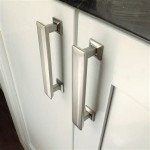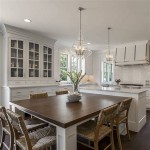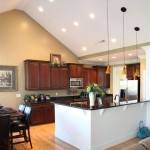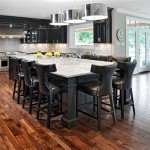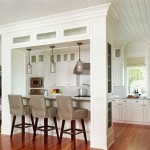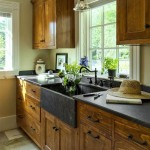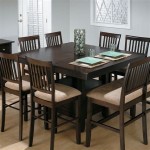Kitchen Cabinet Color Combination Ideas
The kitchen serves as a central hub within the contemporary home. Its functionality and aesthetics are paramount in creating a welcoming and efficient space. Kitchen cabinets, as a dominant visual element, play a crucial role in shaping the overall ambiance. Selecting an appropriate color combination for kitchen cabinets requires careful consideration, balancing personal preferences with established design principles. The following explores several kitchen cabinet color combination ideas, highlighting the principles behind their effectiveness and offering guidance for implementation.
Understanding Color Theory Basics
Before delving into specific color combinations, it is essential to understand fundamental color theory concepts. The color wheel provides a visual representation of color relationships, categorizing colors as primary (red, yellow, and blue), secondary (green, orange, and purple), and tertiary (combinations of primary and secondary colors). Furthermore, colors are classified as warm (reds, oranges, yellows) and cool (blues, greens, purples), each evoking distinct emotional responses. Considering color temperature is crucial in designing a balanced kitchen environment.
Complementary colors, located opposite each other on the color wheel, create high contrast and visual excitement. Analogous colors, situated adjacent to each other, offer a harmonious and cohesive feel. Monochromatic color schemes, utilizing variations of a single color, provide a subtle and sophisticated aesthetic. Understanding these relationships allows for deliberate selection of colors that achieve the desired mood and visual impact within the kitchen.
The concept of value, referring to the lightness or darkness of a color, is also important. Contrasting values create visual interest and define shapes, while similar values result in a more subdued and unified appearance. Utilizing different tints (adding white) and shades (adding black) of chosen colors can expand the design possibilities and enhance the overall aesthetic appeal. Finally, understanding the impact of natural and artificial lighting on color perception is crucial. Colors may appear different depending on the light source, warranting careful consideration during the selection process.
Classic and Timeless Color Combinations
Certain color combinations have proven their enduring appeal, transcending fleeting trends and maintaining relevance over time. These classic combinations offer a safe yet stylish approach to kitchen design.
White and Gray: This combination exemplifies understated elegance and versatility. White cabinets provide a clean and bright foundation, while gray accents introduce subtle depth and sophistication. The specific shade of gray can vary, ranging from light dove gray to deep charcoal, depending on the desired level of contrast. White and gray kitchens are particularly well-suited for modern and contemporary styles, but can also complement traditional designs with appropriate detailing. Consider using a white countertop with gray veining to further enhance the cohesive aesthetic.
White and Wood: The pairing of white cabinets with natural wood tones offers a warm and inviting atmosphere. White provides brightness and neutrality, while wood adds texture and organic appeal. The type of wood used significantly influences the overall aesthetic. Light woods, such as maple or birch, create a Scandinavian-inspired feel, while darker woods, such as cherry or walnut, evoke a more traditional and sophisticated ambiance. This combination works well in a variety of kitchen styles, from farmhouse to contemporary.
Navy Blue and White: Navy blue cabinets paired with white countertops and backsplash create a sophisticated and timeless look. The deep blue provides a rich and grounding element, while white ensures brightness and balance. This combination is particularly effective in traditional and transitional kitchen designs. Gold or brass hardware can further enhance the elegance of the space. Consider incorporating natural elements, such as wood accents, to add warmth and prevent the space from feeling overly formal.
Modern and Contemporary Color Palettes
Modern and contemporary kitchen designs often embrace bolder color choices and unexpected combinations. These palettes prioritize clean lines, minimalist aesthetics, and a focus on functionality.
Black and White: The classic black and white combination offers a striking and dramatic effect. Using black for lower cabinets and white for upper cabinets can ground the space and create a sense of visual balance. Alternatively, a primarily white kitchen with black accents, such as a black island or black hardware, provides a cleaner and more minimalist aesthetic. This combination works exceptionally well in modern and industrial-inspired kitchens. Consider incorporating stainless steel appliances and accents to further enhance the contemporary feel.
Green and White: Green cabinets, ranging from muted sage to vibrant emerald, are gaining popularity in contemporary kitchen design. When paired with white countertops and backsplash, green cabinets can create a refreshing and nature-inspired ambiance. Lighter shades of green evoke a sense of tranquility, while darker shades add drama and sophistication. This combination is particularly effective in kitchens with ample natural light. Consider incorporating plants and other natural elements to further enhance the connection to the outdoors.
Gray and Yellow: This combination offers a playful and energetic take on the classic gray palette. Warm yellow accents, such as a yellow backsplash or yellow hardware, can brighten up a gray kitchen and add a touch of personality. The specific shades of gray and yellow should be carefully selected to ensure a harmonious balance. A light gray paired with a soft yellow creates a more subtle and refined look, while a darker gray paired with a vibrant yellow offers a bolder and more contemporary aesthetic.
Unique and Unexpected Color Combinations
For those seeking to make a statement and create a truly unique kitchen space, exploring unexpected color combinations can yield impressive results. These palettes require careful planning and a strong understanding of color theory to avoid creating a jarring or unbalanced aesthetic.
Teal and Copper: Teal cabinets paired with copper hardware and accents create a luxurious and sophisticated ambiance. The rich teal color adds depth and drama, while the copper accents provide warmth and visual interest. This combination is particularly effective in kitchens with a vintage or eclectic style. Consider incorporating natural stone countertops and backsplash to further enhance the luxurious feel. The use of proper lighting is paramount to highlighting the richness of each color.
Burgundy and Gold: Burgundy cabinets paired with gold hardware and accents offer a bold and opulent aesthetic. The deep burgundy color adds a sense of drama and sophistication, while the gold accents provide a touch of glamour. This combination is best suited for larger kitchens with ample natural light. Careful consideration should be given to the surrounding decor to ensure a cohesive and balanced design.
Two-Tone Blue: Utilizing two different shades of blue for upper and lower cabinets can create a visually interesting and cohesive kitchen design. For example, pairing a light sky blue with a deeper navy blue can add depth and dimension to the space. This combination works well in coastal-inspired kitchens or in designs seeking a calming and tranquil atmosphere. Accenting the blue tones with neutral colors, such as white or beige, can help to balance the overall aesthetic.
Factors to Consider When Choosing a Color Combination
Beyond personal preferences, several factors should be considered when selecting a color combination for kitchen cabinets. These factors include the size and layout of the kitchen, the amount of natural light available, the existing architectural style, and the overall design aesthetic.
In smaller kitchens, lighter colors are generally preferred as they reflect light and create a sense of spaciousness. Darker colors can make a small kitchen feel cramped and claustrophobic. However, strategically incorporating dark accents, such as a dark island or dark hardware, can add visual interest without overwhelming the space.
The amount of natural light available significantly impacts the perception of color. Colors may appear different under different lighting conditions. It is important to test color samples in the actual kitchen space, both during the day and at night, to ensure that the chosen colors appear as desired.
The existing architectural style of the home should also be considered. A modern kitchen may not be appropriate in a traditional home, and vice versa. The color combination should complement the overall style of the home and create a cohesive and harmonious design.
The overall design aesthetic should also guide the color selection process. A minimalist kitchen will require a different color palette than a more decorative or eclectic kitchen. It is important to consider the desired mood and atmosphere when choosing colors. The flooring, backsplash, and countertop materials should also be considered and must harmonize with the cabinet colors. Selecting complementary materials can seamlessly tie the entire room together.
Implementing the Chosen Color Combination
Once a color combination has been selected, careful planning is required to ensure its successful implementation. This involves selecting the appropriate materials, finishes, and hardware, as well as coordinating the color scheme with other elements of the kitchen design.
The finish of the cabinets can significantly impact the overall aesthetic. A glossy finish will reflect more light and create a more modern look, while a matte finish will absorb light and create a more subdued and sophisticated feel. The hardware, such as knobs and pulls, should also complement the color scheme. Chrome or stainless steel hardware typically works well with modern designs, while brass or bronze hardware can add warmth and elegance to traditional designs.
The countertop and backsplash materials should also be carefully selected to coordinate with the cabinet colors. Natural stone countertops, such as granite or marble, can add a touch of luxury, while solid surface countertops offer durability and ease of maintenance. The backsplash can serve as an opportunity to introduce additional color or texture to the kitchen. Consider using glass tiles, ceramic tiles, or natural stone to create a visually interesting and cohesive design.
Finally, the lighting should be carefully considered to enhance the color scheme. Under-cabinet lighting can highlight the counter-tops and backsplash, while pendant lighting can add a touch of drama and sophistication. Recessed lighting provides general illumination and can help to brighten up the space. The strategic use of lighting can significantly enhance the overall aesthetic appeal of the kitchen.

Amazing Two Color Kitchen Cabinet Ideas That You Ll Love

35 Modular Kitchen Colour Combinations For Every Size By Livspace

14 Kitchen Cabinet Color Combinations To Try

How To Choose Kitchen Cabinet Paint Colors Hgtv

Trending Kitchen Cabinets Colour Schemes Of 2024 Design Cafe

6 Trending Ideas For Kitchen Cabinet Color 2024

Kitchen Cabinet Colours Picking The Right For Your

Top Modular Kitchen Cabinet Color Combination Design Ideas 2024 Home Decoratio Modern Small Simple Interior

14 Kitchen Cabinet Color Combinations To Try

8 Awesome And Trendy Colour Schemes For Your Kitchen
See Also

